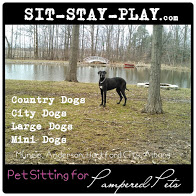Why does my dog pee when she gets excited? Does she do it out of fear, excitement, submission or anxiousness? That’s a question we get asked quite frequently here at sit-stay-play and we’d like to take a little time and shed some light on this important topic.
Side note: many dogs and puppies are given away and given to animal shelters because of this problem. We hope you learn why the potty problem happens and how to help your dog learn to stop it after you’ve read this article. Feel free to contact sit-stay-play if you have any questions. Our goal is to help pet parents be the best they can and to help pets live better lives!
Common Situations Where Dogs May Pee At Inappropriate Times Or Pee Submissively
 The reasons dogs may pee during times of excitement are numerous. There’s no one particular reason that can be pinpointed to every dog that does this, however, these normal and seemingly innocuous situations may trigger this inappropriate (and annoying) behavior:
The reasons dogs may pee during times of excitement are numerous. There’s no one particular reason that can be pinpointed to every dog that does this, however, these normal and seemingly innocuous situations may trigger this inappropriate (and annoying) behavior:
–A person approaches the dog’s face or rear
–When someone pats them on top of their head (or under chin or other body part)
–A leash is attached to their collar
–When someone tries to pick them up
–A person comes in the house or leaves
–Loud talking or shouting
–When a person looks at them
Additionally, underlying medical problems such as urinary tract/kidney infection, kidney/bladder stones, bladder deformity or problem can cause peeing outside of the normal potty schedule.
You see, there’s LOTS of reasons this behavior occurs. If you have a puppy that does this, we encourage you to address it now, don’t wait. It’s harder to modify when adult dogs but can be done with patience, knowledge and consistency.
How You Can Help Your Dog Stop Peeing At Inappropriate Times
Before you can help your dog kick this problem, you have to isolate exactly what is causing it.
Using the examples above, start to document the exact reason your dog or puppy starts to piddle, then write it down. Make note if a person is near the dog when it happens and what exactly that person does before, during and after.
Now using that list, do you see a pattern?
Does your dog only piddle when you come in from work?
Are you speaking to your dog as soon as you open the door?
Do you baby talk to your dog because you just love him or her so much?
Does your dog only piddle when your kids come home from school or when someone puts him in the crate?
Taking Steps To Solve The Peeing Problem
Meet with your veterinarian and tell them the problem. They’ve heard the question, “Why does my dog pee when she’s excited? Your veterinarian has heard this more times then we have and maybe they have some tips for you. Whatever you do, share with them what triggers the peeing. The more information they have, the better chance they have to help you.
There’s many way you can tackle this but first and foremost, regardless of what’s triggering the problem or when it’s occurring, we suggest you DO NOT give any attention to your dog for at least 5 minutes when you get home.

This short time will give your dog time to adjust to the changing home dynamics. During the quiet time, don’t talk to your dog, don’t look at him and don’t give him any affection. After a few days of doing this he’ll start to learn the routine and will start behaving better (hopefully) and will lessen the potty accidents if that was once a trigger.
Another thing you can do to address the problem is to change the way you do the thing that triggers the behavior. So what do I mean by that? Here’s an example:
Let’s say Fido gets super anxious when you try to take him out for a walk and pees every single time you walk near him with the leash. You might want to work on desensitization.
Here’s steps to work on desensitization:
Instead of walking to him with the leash just lay the leash by his food dish or crate. Don’t force him to go near it, don’t force him to smell it or look at it. The human should just ignore it.
Your dog can smell it and get used to it being near him. This gives him the ability to control how close he gets to the leash. If he’s a dog or puppy you’ve recently adopted he may have really bad memories of a leash or leash type object. Take this into consideration.
After doing the desensitization step above a few days, move the leash to another part of the floor, say next to the couch. Practice the same thing: ignore it completely.
To start getting him used to being near the leash and you, sit on the floor and call him over to you. Give him a treat when he walks by the leash. By you not forcing him to be near it and allowing him to make the decision to get the treat, his confidence will be built up.
After a few days of getting treats when he walks near you and the leash, he’ll be less anxious or scared, thereby decreasing the peeing. He’ll see that you’re not forcing the leash issue, which will create a better bond and trust between you.
Also, another thing to look at is when exactly does he pee when you put the leash on…is it when you just walk near him or when you clip it on his collar? Are you approaching from the front or side?
These are all important factors in fixing the problem. Don’t take anything for granted or think something shouldn’t matter, because that minuscule thing might be the one thing that triggers the peeing.
So let’s say you’ve progressed and now you can put the leash on without any piddles but when your spouse does it, Fido reverts to her old ways. In this case, you’d go through the same steps.
Analyze why and when it happens…
Change the way the person does the triggering behavior…
Go step by step and get the dog to associate the ‘scary thing’ with something good, i.e. treats, rewards…
Go slowly until the behavior lessons and eventually stops.
These behavior modification steps can be used to help with fears of many kinds, i.e. car rides, certain people, certain types of floors or new locations. However, we always recommend you discuss all training techniques with a professional dog behaviorist before starting a new training plan.
Basic Behavior Training
Another huge thing we encourage all dog parents to do is start basic obedience training soon.
A dog will be more confidant and will behave better if he practices basic obedience. Teach commands and behaviors such as sit, down, come, stay, wait, easy and walking politely on leash can start immediately. A knowledgeable trainer will increase the difficulty as the puppy grows.
Confidant and well-socialized dogs will be less likely to have potty accidents. Behavior problems like submissive peeing and other annoying puppy problems will diminish with daily basic obedience practice.
Our team here at sit-stay-play works with puppies and dogs with submissive peeing problems and basic obedience. Learn more at these links: Basic Obedience and Puppy Training and Training Young Puppies .
Positive Reinforcement Works – Do It!
Always, always, always keep your training and behavior modification practice positive!
The minute you raise your voice, smack your dog, force him to move in a position you want or shove him in a crate out of anger or yell at him when he’s peeing, you’ll put a big roadblock up. Who wants to work under an ogre or with someone that scares the #$%@ out of them? I don’t, you probably don’t and I can guarantee your dog doesn’t. Keep it positive and you’ll get better results.
Answering the question, “Why does my dog pee when she gets excited?”,
Kelley Stewart, CEO|Pet Sitter
sit-stay-play In-home pet sitting & more.LLC
Serving Muncie, Yorktown, Anderson, Noblesville and Indianapolis, Indiana
P.S. Set up basic behavior training for your puppy or adult dog here!
